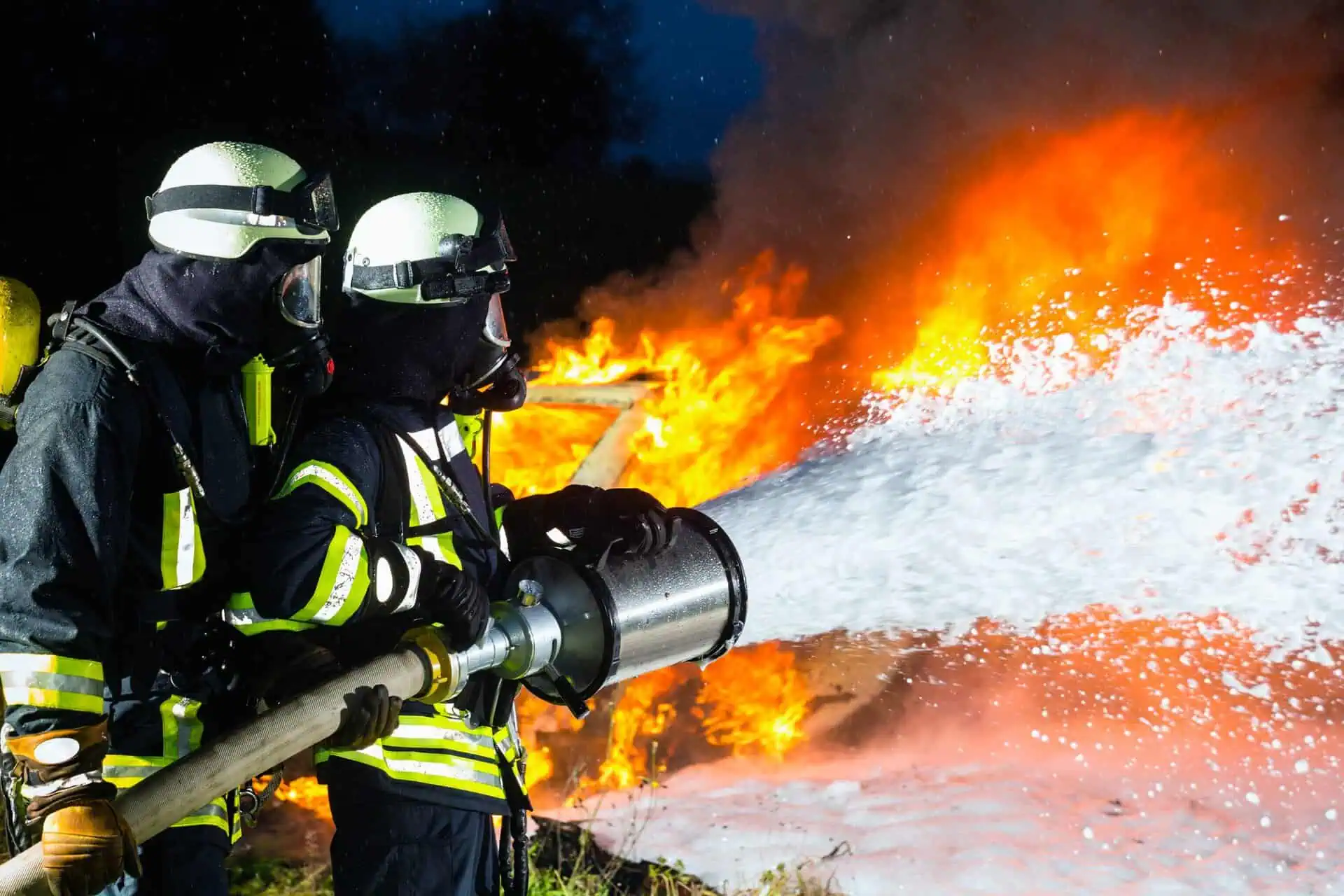AFFF Firefighting Foam Lawsuit: What You Need to Know?
- Last Updated: July 14th, 2025

Attorney Jessica Paluch-Hoerman, founder of TruLaw, has over 28 years of experience as a personal injury and mass tort attorney, and previously worked as an international tax attorney at Deloitte. Jessie collaborates with attorneys nationwide — enabling her to share reliable, up-to-date legal information with our readers.
Legally Reviewed
This article has been written and reviewed for legal accuracy and clarity by the team of writers and legal experts at TruLaw and is as accurate as possible. This content should not be taken as legal advice from an attorney. If you would like to learn more about our owner and experienced injury lawyer, Jessie Paluch, you can do so here.
Fact-Checked
TruLaw does everything possible to make sure the information in this article is up to date and accurate. If you need specific legal advice about your case, contact us by using the chat on the bottom of this page. This article should not be taken as advice from an attorney.
Key takeaways:
- Major companies have agreed to a $1.185 billion settlement fund for PFAS-contaminated drinking water due to AFFF firefighting foam.
- 3M, the primary defendant in the AFFF lawsuit, is in settlement negotiations, with a speculated offer of $10 billion.
- The AFFF firefighting foam lawsuits are rapidly increasing, with a total of 4,793 claims.
AFFF Firefighting Foam Lawsuit: What You Need to Know?
The Aqueous Film Forming Foam (AFFF) is a powerful fire suppressant used by firefighters to extinguish flammable liquid pool fires.
However, the foam contains PFAS chemicals, which have been linked to various health risks, including cancer.
As a result, numerous lawsuits have been filed against the manufacturers of AFFF, particularly by firefighters and other individuals who have been exposed to the foam and subsequently developed cancer.
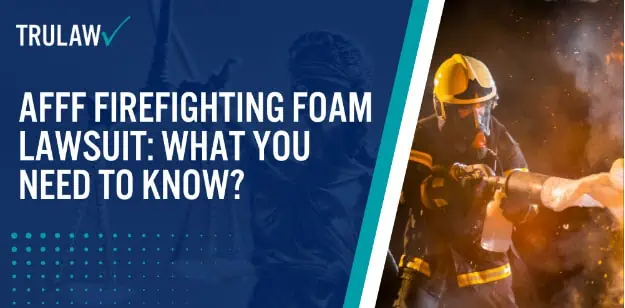
These lawsuits have been consolidated into a multi-district litigation (MDL) in the United States Federal Court in the District of South Carolina.
As of August 2023, there are over 3,300 plaintiffs in the lawsuit.
The first bellwether trial is expected to have a significant impact on the future of the litigation.
If you’ve been exposed to AFFF and diagnosed with cancer, you may be entitled to financial compensation through a firefighter foam lawsuit.
Table of Contents
Firefighting Foam Lawsuit Overview
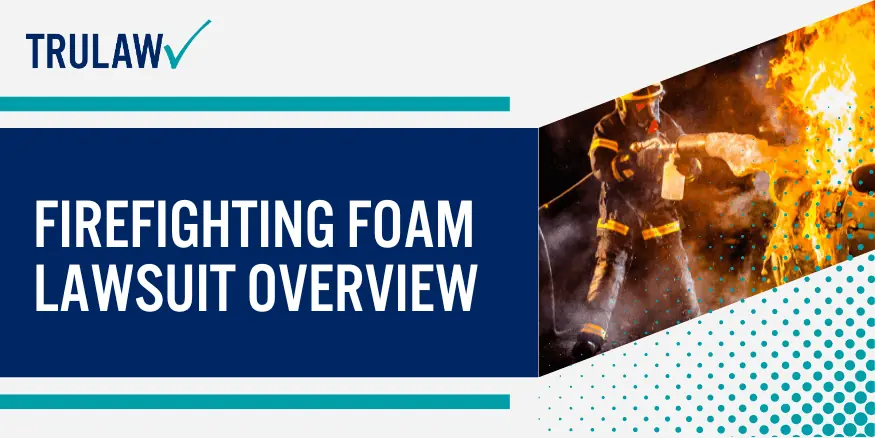
Firefighting foam, also known as aqueous film-forming foam (AFFF), has been widely used by firefighters for decades to suppress and extinguish flammable liquid fires.
However, recent studies have raised concerns about the potential health and environmental risks associated with the use of this foam.
As a result, a number of lawsuits have been filed against the manufacturers of toxic firefighting foam, alleging negligence, product liability, and failure to warn.
The lawsuits claim that the manufacturers of firefighting foam were aware of the potential health risks associated with the use of their products but failed to warn firefighters.
Other users adequately alleged that the foam contains per- and poly-fluoroalkyl substances (PFAS), which are toxic chemicals that can accumulate in the environment and in the human body over time.
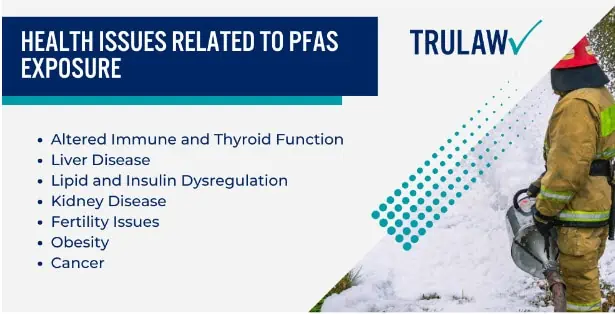
Exposure to PFAS has been linked to various health issues, but not limited to:
- Altered Immune and Thyroid Function
- Liver Disease
- Lipid and Insulin Dysregulation
- Kidney Disease
- Fertility Issues
- Obesity
- Cancer
In addition to the health risks, firefighting foam has also been found to contaminate groundwater and surface water, posing a threat to drinking water supplies and the environment.
PFAS have been detected in drinking water sources near airports, military bases, and other locations where firefighting foam has been used.
This has led to the closure of wells and the implementation of costly water treatment measures.
The AFFF foam lawsuit seek compensation for medical expenses, lost wages, pain and suffering, and other damages suffered by individuals exposed to firefighting foam.
They also aim to hold the manufacturers accountable for their alleged negligence and raise awareness about the potential risks associated with using this foam.
In response to the lawsuits and growing concerns about the health and environmental impacts of firefighting foam, regulatory agencies have taken action.
The U.S. Environmental Protection Agency (EPA) has set a health advisory level for PFAS in drinking water and is considering whether to regulate these chemicals under the Safe Drinking Water Act.
Some states have also taken steps to regulate or ban the use of firefighting foam.
The AFFF foam lawsuit seek compensation for medical expenses, lost wages, pain and suffering, and other damages suffered by individuals exposed to firefighting foam.
Firefighting Foam & PFAS
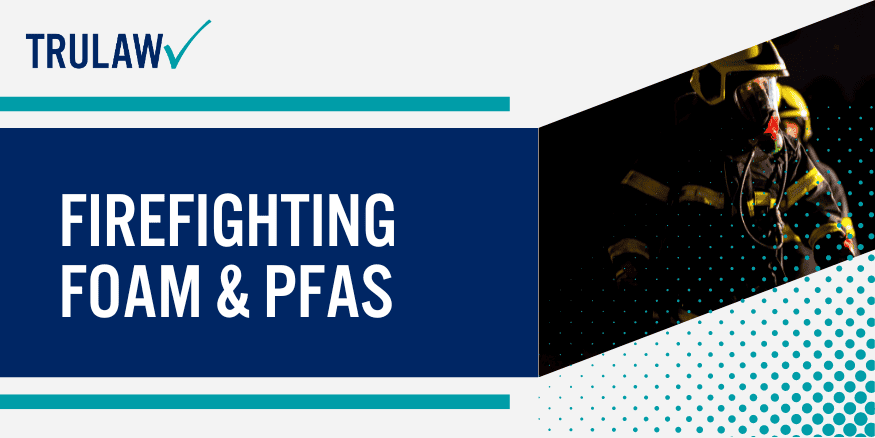
Firefighting foam is a specialized substance used to extinguish fires involving flammable liquids, such as oil and gasoline.
However, some firefighting foams contain per- and polyfluoroalkyl substances (PFAS), which have raised concerns due to their potential health and environmental impacts.
However, they are also persistent in the environment and can accumulate in living organisms.
Studies have linked PFAS exposure to various health issues, including cancer, liver damage, and immune system dysfunction.
Efforts are underway to develop alternative foams that are effective yet free of PFAS.
Understanding The Health Risks Associated With Firefighting Foam
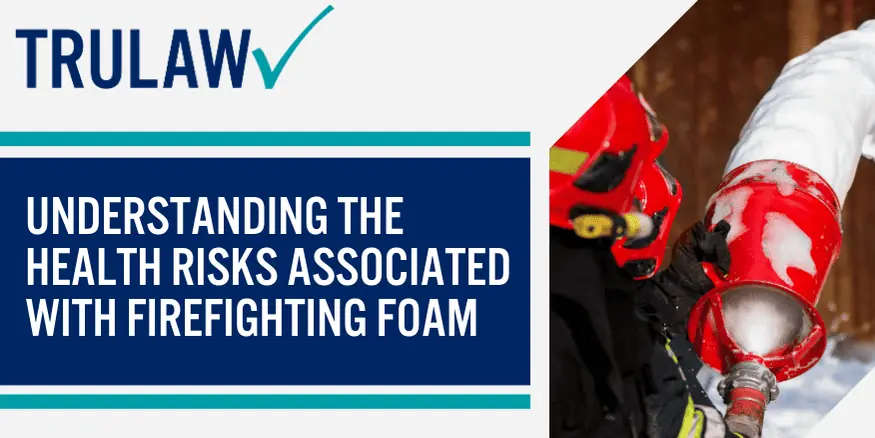
Firefighting foam is commonly used to extinguish fires and prevent them from spreading.
However, recent studies have raised concerns about the potential health risks associated with the use of firefighting foam.
One of the main health risks associated with firefighting foam is the presence of per- and polyfluoroalkyl substances (PFAS).
These chemicals have been used in firefighting foam for their ability to suppress flammable liquid fires.
However, PFAS have been linked to a range of negative health effects, including liver damage, immune system suppression, and an increased risk of certain types of cancer.
In addition to PFAS, firefighting foam can also contain other hazardous substances, such as heavy metals and volatile organic compounds (VOCs).
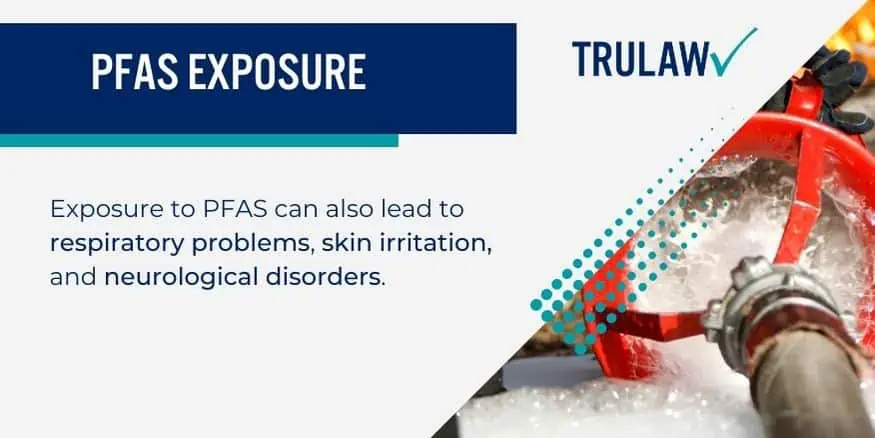
Firefighters, in particular, are at a higher risk of exposure to these harmful substances due to their frequent use of firefighting foam.
They may inhale the foam particles or come into direct contact with it during firefighting operations.
Additionally, the foam can contaminate water sources, leading to further exposure risks for both firefighters and the general public.
To address these health risks, it is important for firefighters and other individuals involved in firefighting operations to take proper precautions.
This includes wearing personal protective equipment (PPE) to minimize direct contact with the foam, using ventilation systems to reduce inhalation of foam particles, and properly disposing of used foam to prevent environmental contamination.
Joining a Firefighting Foam Lawsuit Investigation
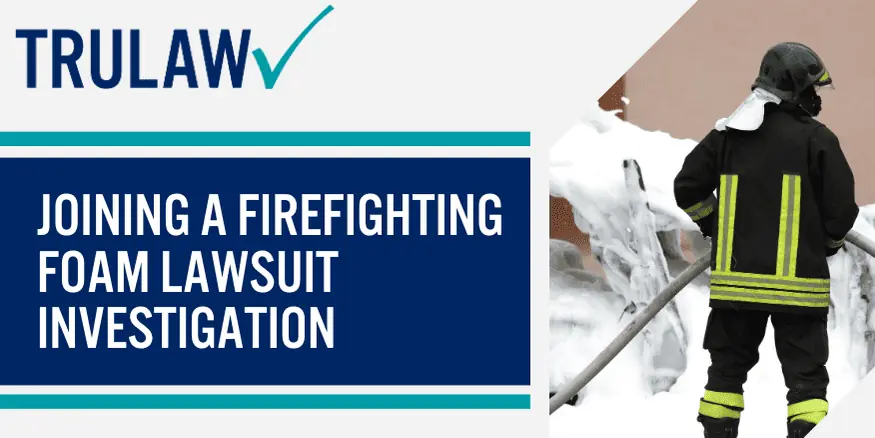
If you have been affected by the use of firefighting foam containing harmful chemicals, you may be eligible to join a lawsuit investigation.
AFFF Firefighting Foam Lawsuit
Firefighting foam, commonly used to extinguish flammable liquid fires, has been found to contain toxic substances that can contaminate water sources and pose health risks.
By joining a firefighting foam lawsuit investigation, you can seek compensation for any damages or injuries caused by exposure to these chemicals.
It is important to consult with a legal professional who specializes in AFFF litigation to understand your rights and options.
Together, we can hold responsible parties accountable and work towards a safer future.
Legal Requirements For Filing A Firefighting Foam Lawsuit
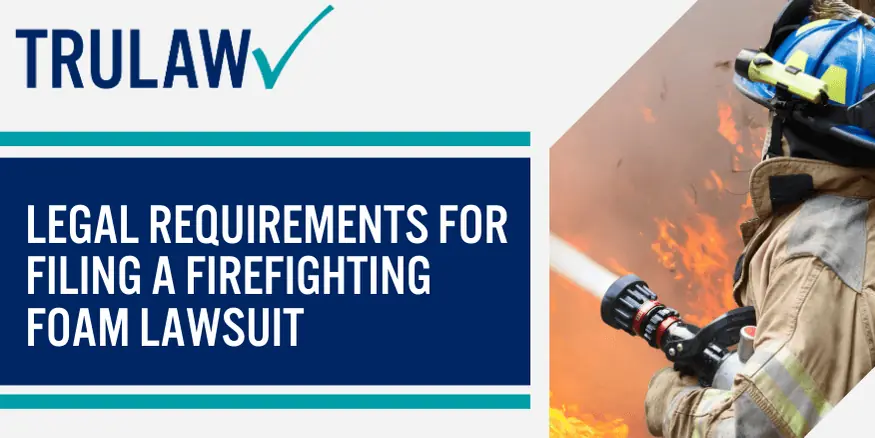
When considering filing an AFFF firefighting foam lawsuit, it is important to understand the legal requirements involved.
This can help ensure that you have a strong case and increase your chances of receiving compensation for any damages or injuries caused by the foam.
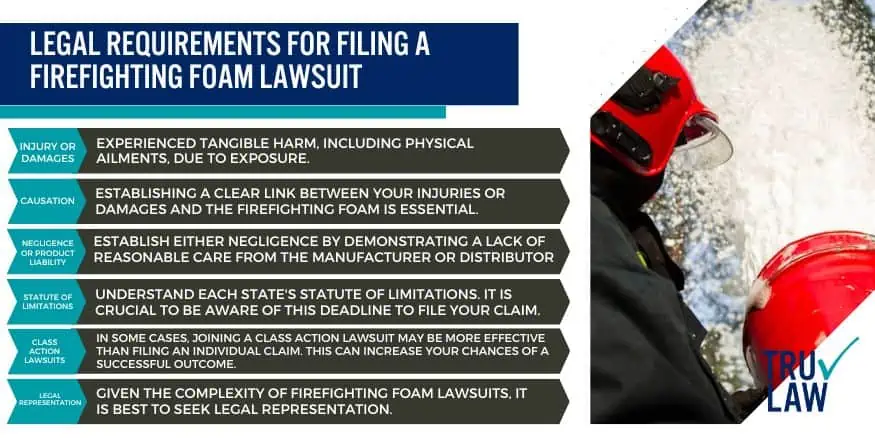
Here are the following six (6) key legal requirements to keep in mind:
- Injury or damages
- Causation
- Negligence or product liability
- Statute of limitations
- Class action lawsuit
- Legal representation
For more details regarding these six (6) legal requirements for filing a firefighting foam lawsuit, please check the FAQ section at the bottom of this page!
Steps Involved In Filing A Firefighting Foam Lawsuit
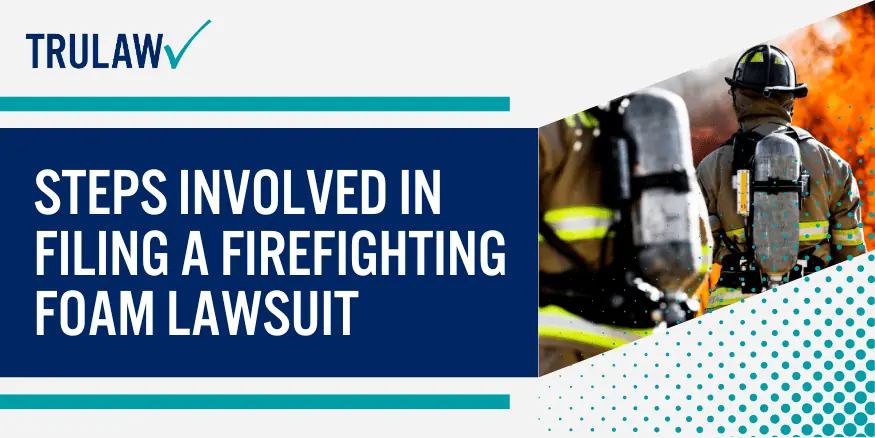
Filing a firefighting foam lawsuit can be a complex process, but it is an important step for those seeking justice and compensation for the harmful effects of these foams.
This type of lawsuit typically involves individuals or communities who have been exposed to firefighting foam chemicals, such as per- and polyfluoroalkyl substances (PFAS), and have suffered health issues as a result.
From gathering evidence to finding legal representation, understanding the steps involved can help individuals navigate the legal system and seek the compensation they deserve also with the help of AFFF cancer lawyer.
Understanding Tier Settlements in AFFF Lawsuits
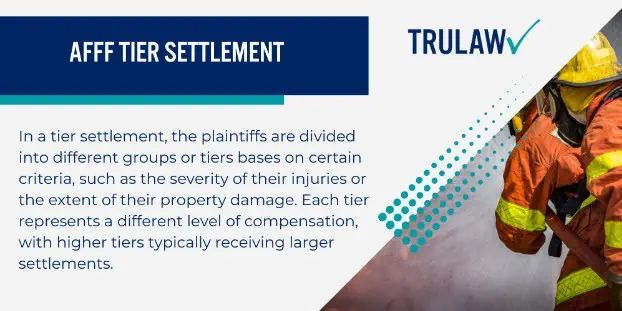
In recent years, lawsuits related to the use of Aqueous Film-Forming Foam (AFFF) have been on the rise.
AFFF is a firefighting foam that contains per- and polyfluoroalkyl substances (PFAS), which have been linked to various health issues.
As a result, individuals and communities affected by AFFF contamination have filed lawsuits seeking compensation for damages.
One important aspect of AFFF lawsuits is the concept of tier settlements.
Tier settlements are a way to streamline the legal process and ensure fair compensation for all plaintiffs involved.
They are often used in mass tort cases where there are a large number of plaintiffs with similar claims.

The purpose of tier settlements is to provide a fair and efficient resolution to AFFF lawsuits.
By grouping plaintiffs into tiers, it allows for more accurate and consistent compensation based on the specific circumstances of each case.
It also helps to expedite the settlement process, as it can be challenging to individually negotiate and litigate each claim in a mass tort case.
However, tier settlements may also have some limitations.
For example, they may not account for the unique circumstances of each plaintiff, as they are based on general criteria.
Additionally, some plaintiffs may feel that the compensation offered in their tier is inadequate for the damages they have suffered.
It is important for individuals involved in AFFF lawsuits to understand the implications of AFFF settlements.
They should consult with their attorneys to ensure that their rights are protected and that they receive fair compensation for their injuries or damages.
Compensation And Damages In Firefighting Foam Lawsuits
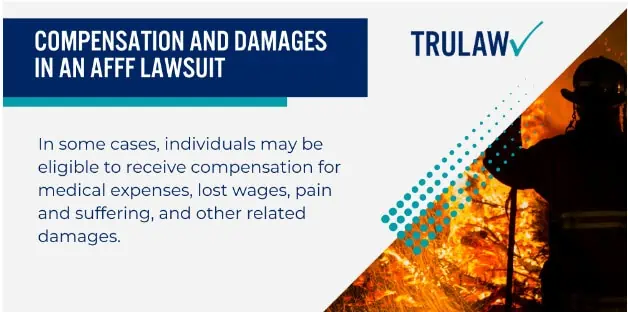
Compensation and damages in firefighting foam lawsuits can vary significantly depending on the specific circumstances of each case.
It is important to understand the factors that can influence the amount of compensation awarded and the types of damages that may be sought in these lawsuits.
One of the main factors that can affect compensation in firefighting foam lawsuits is the extent of the injuries or damages suffered by the individuals or communities affected by the foam.
The severity of health issues, property damage, or environmental contamination caused by the foam can play a significant role in determining the amount of compensation awarded.

Another factor that can impact compensation is the strength of the evidence linking the foam to the injuries or damages.
In order to successfully pursue an AFFF cancer lawsuit, plaintiffs must be able to demonstrate a clear connection between their injuries or damages and the use of firefighting foam.
This can involve presenting scientific studies, expert testimony, and other evidence to establish causation.
The strength of this evidence can influence the likelihood of success in the lawsuit and the amount of compensation awarded.
The parties responsible for the use or manufacture of the firefighting foam can also impact the compensation available in these lawsuits.
Depending on the circumstances, multiple parties may be held liable for the injuries or damages caused by the foam, including manufacturers, distributors, and users of the foam.
The financial resources of these parties can influence the amount of compensation that is ultimately awarded.
In some cases, class action lawsuits may be pursued, allowing multiple individuals or communities to seek compensation for their damages collectively.
It is important for individuals or communities affected by AFFF firefighting foam MDL to consult with an experienced firefighting foam lawyer who specializes in these types of lawsuits.
An attorney can help assess the case’s specific circumstances, gather the necessary evidence, and pursue compensation on behalf of the affected parties.
Legal Representation In Firefighting Foam Lawsuits
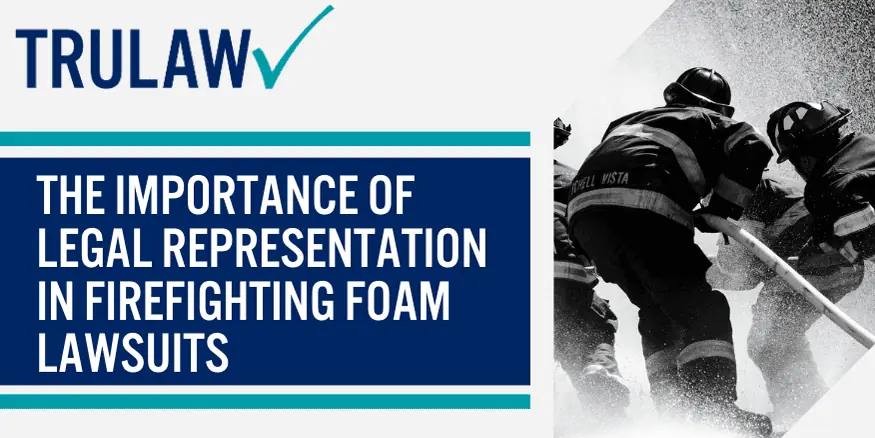
Legal representation is crucial in firefighting foam cancer lawsuits for several reasons.
Firstly, these lawsuits involve complex legal and scientific issues that require specialized knowledge and expertise.
Firefighting foam contains harmful chemicals, such as per- and polyfluoroalkyl substances (PFAS), which have been linked to various health problems, including cancer, thyroid disease, and developmental issues.
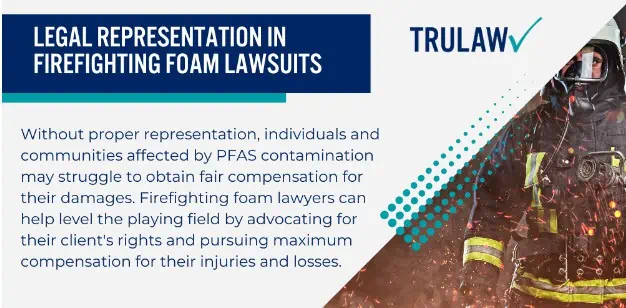
To successfully navigate these cases, it is important to have a lawyer who understands the scientific evidence and can effectively present it in court.
Secondly, lawsuits against firefighting foam manufacturers and distributors often involve multiple parties and jurisdictions.
For example, individuals who have been affected by PFAS contamination may file firefighting foam cancer lawsuits against the manufacturers of the foam, as well as the companies that used and distributed it.
These cases may also involve federal, state, and local laws and regulatory agencies.
A skilled lawyer can help coordinate and manage these complex legal matters, holding all relevant parties accountable.
Furthermore, legal representation is essential in AFFF firefighting foam lawsuits because it levels the playing field.
Manufacturers and distributors of firefighting foam are typically large corporations with significant resources and legal teams.
Lastly, legal representation provides emotional support and guidance to individuals and communities affected by PFAS contamination.
Dealing with the health effects and financial burdens associated with firefighting foam exposure can be overwhelming.
A lawyer who specializes in these cases can offer compassion, understanding, and guidance throughout the legal process, helping clients navigate the complexities of the legal system and obtain justice.
AFFF Lawsuit Frequently Asked Questions
-
The six (6) requirements to file a firefighting foam lawsuit are:
1. Injury or damages: To file a lawsuit, you must have suffered some form of injury or damages as a result of exposure to firefighting foam.
This can include physical injuries, such as respiratory problems or skin irritation, as well as property damage.
2. Causation: It is essential to establish a clear link between your injuries or damages and the firefighting foam.
This means providing evidence that shows how the foam directly caused or contributed to your harm.
This can be challenging, as firefighting foam lawsuits often involve complex scientific and medical evidence.
3. Negligence or product liability: Depending on the circumstances of your case, you may need to prove either negligence or product liability.
Negligence involves showing that another party, such as the manufacturer or distributor of the foam, failed to exercise reasonable care, resulting in your injuries.
Product liability, on the other hand, focuses on proving that the foam itself was defective or unreasonably dangerous.
4. Statute of limitations: Each state has a statute of limitations, which sets a time limit for filing a lawsuit.
It is crucial to be aware of this deadline and ensure that you file your claim within the specified timeframe.
Failing to do so can result in your case being dismissed.
5. Class action lawsuits: In some cases, it may be more effective to join a class action lawsuit rather than filing an individual claim.
Class actions involve a group of individuals with similar injuries or damages collectively suing the responsible party.
This can provide strength in numbers and increase the chances of a successful outcome.
6. Legal representation: Given the complexity of firefighting foam lawsuits, it is advisable to seek legal representation.
-
AFFF, or aqueous film-forming foam, has been widely used by firefighters and the military for decades due to its effectiveness in extinguishing flammable liquid fires.
However, recent studies have shown that AFFF contains harmful chemicals known as per- and polyfluoroalkyl substances (PFAS), which have been linked to various health issues, including cancer and reproductive problems.
As a result, many individuals who have been exposed to AFFF are filing lawsuits to seek compensation for their injuries and medical expenses.
So, how do AFFF lawsuits work? Let’s break it down.
Here are the following eight (8) steps on how AFFF lawsuits work:
1. Identifying the Defendants: The first step in an AFFF lawsuit is identifying the potentially liable parties.
This can include the manufacturers of AFFF, as well as the companies that used or distributed the foam.
In some cases, government entities may also be held responsible if they were aware of the risks associated with but failed to take appropriate action.
2. Gathering Evidence: Once the defendants have been identified, the next step is to gather evidence to support the claim.
This can involve obtaining medical records, conducting expert analyses, and collecting documentation on the use and distribution of AFFF.
The goal is to establish a clear link between the plaintiff’s exposure to AFFF and their resulting health issues.
3. Filing the Lawsuit: After sufficient evidence has been gathered, the plaintiff’s attorney will file an AFFF lawsuit on their behalf.
The lawsuit will outline the allegations against the defendants and the damages sought by the plaintiff, which may include medical expenses, lost wages, pain and suffering, and punitive damages.
4. Discovery and Negotiation: Once the lawsuit has been filed, both parties will engage in a process called discovery.
This involves exchanging information and evidence relevant to the case.
During this phase, the plaintiff’s attorney may depose witnesses, request documents, and gather additional evidence to strengthen their case.
In some instances, the parties may also enter into settlement negotiations to reach a resolution without going to trial.
5. Going to Trial: If a settlement cannot be reached during the negotiation phase, the case may proceed to trial.
During the trial, both parties will present their arguments and evidence to a judge or jury.
The plaintiff’s attorney will present their case, calling witnesses and experts to testify and presenting any additional evidence that supports their claims.
The defendants’ attorneys will then have the opportunity to cross-examine the witnesses and present their own evidence and arguments.
After both sides have presented their cases, the judge or jury will make a decision based on the evidence and arguments presented.
6. Verdict and Damages: If the case goes to trial, the judge or jury will ultimately deliver a verdict.
They will determine whether the defendants are liable for the plaintiff’s injuries and, if so, the amount of damages that should be awarded.
Damages can vary widely depending on the severity of the plaintiff’s injuries, the impact on their quality of life, and any economic losses they have suffered.
The awarded damages may include compensation for medical expenses, lost wages, pain and suffering, and punitive damages if the defendant’s actions were deemed particularly reckless or negligent.
7. Appeals Process: After a verdict has been reached, either party may choose to appeal the decision if they believe there were errors made during the trial that affected the outcome.
The appeals process can be lengthy and complex, involving additional legal arguments and hearings.
If an appeal is successful, the case may be retried, or the damages awarded may be modified.
Settlements and Mass Torts
In some cases, AFFF lawsuits may be part of a larger mass tort, which involves multiple plaintiffs with similar claims against the same defendants.
In these situations, the defendants may choose to offer settlements to avoid the cost and uncertainty of individual trials.
Settlements can provide compensation to the plaintiffs without the need for a trial, but the amount offered may be less than what could be awarded in court.
Plaintiffs must carefully consider the terms of any settlement offers.
Contact an AFFF foam cancer lawyer today.
-
An AFFF lawyer can provide valuable assistance and expertise if you have been affected by Aqueous Film-Forming Foam (AFFF) contamination.
AFFF is a firefighting foam that contains harmful chemicals called per- and polyfluoroalkyl substances (PFAS), which have been linked to various health issues, including cancer, thyroid disease, and developmental delays.
Here are the ten (10) ways an AFFF lawyer can help you:
1. Legal Representation: An AFFF lawyer can represent you in legal proceedings, such as filing a lawsuit against the responsible parties.
They will gather evidence, interview witnesses, and build a strong case on your behalf.
They will also negotiate with insurance companies and other involved parties to ensure you receive fair compensation for your damages.
2. Knowledge of Laws and Regulations: AFFF contamination cases can be complex, as they involve understanding environmental laws, toxic torts, and product liability.
An AFFF lawyer specializes in this area of law and has a deep understanding of the relevant laws and regulations.
They will navigate through the legal complexities and ensure your rights are protected.
3. Investigation and Documentation: AFFF lawyers have the resources and expertise to conduct thorough investigations into the source and extent of the contamination.
They will work with environmental experts and toxicologists to gather scientific evidence and document the impact of AFFF exposure on your health and property.
This evidence is crucial in proving liability and seeking compensation.
4. Compensation for Damages: If you have suffered health issues or property damage due to AFFF contamination, Firefighting foam cancer lawyers can help you seek compensation for medical expenses, lost wages, pain and suffering, property remediation, and other related damages.
They will calculate the full extent of your losses and fight for your right to fair compensation.
5. Class Action Lawsuits: In some cases, AFFF contamination affects a large number of people in a community.
An AFFF lawyer can help you join or initiate a class-action lawsuit, where multiple individuals can collectively seek compensation for their damages.
6. Expert Negotiation Skills: One of the key roles of an AFFF lawyer is to negotiate on your behalf with insurance companies and other parties involved in the case.
They have the expertise and experience to navigate through complex negotiations and ensure that you receive fair compensation for your damages.
Their negotiation skills can significantly increase the likelihood of a successful outcome in your case.
7. Trial Experience: If your case goes to trial, an AFFF lawyer will be your advocate in the courtroom.
They have trial experience and are skilled in presenting evidence, cross-examining witnesses, and making persuasive arguments to the judge and jury.
Their courtroom expertise can greatly enhance your chances of winning your case and obtaining the compensation you deserve.
8. Emotional Support: Dealing with the aftermath of AFFF contamination can be emotionally challenging.
An AFFF lawyer not only provides legal assistance but also offers emotional support throughout the legal process.
They understand the impact that AFFF exposure can have on your health and well-being, and they will be there to listen to your concerns and provide guidance and reassurance.
9. Timely Resolution: AFFF contamination cases can be lengthy and complex, but an AFFF lawyer will work diligently to ensure a timely resolution.
They will stay on top of deadlines, gather necessary evidence promptly, and keep you informed of any developments in your case.
Their goal is to resolve your case as efficiently as possible, allowing you to move forward with your life.
10. Peace of Mind: Hiring an AFFF lawyer can provide you with peace of mind during a difficult time.
Knowing that you have a dedicated legal professional on your side, fighting for your rights and seeking justice, can alleviate some of the stress and uncertainty associated with AFFF contamination.
You can focus on your health and well-being while your lawyer handles the legal aspects of your case.
If you or someone you care about has been exposed to AFFF and experienced health issues. As a result, you might be eligible to pursue legal action.
Reach out to us for a Free Consultation or utilize our chatbot to determine if you qualify for the Firefighting Foam Lawsuit promptly.
At TruLaw, we are a reliable source of information for individuals seeking to understand the potential side effects associated with drugs, medical devices, and chemicals their loved ones use.
Our team collaborates with skilled firefighting foam attorneys who are ready to advocate for those who have been adversely affected by these substances and other products.

Managing Attorney & Owner
With over 25 years of legal experience, Jessica Paluch-Hoerman is an Illinois lawyer, a CPA, and a mother of three. She spent the first decade of her career working as an international tax attorney at Deloitte.
In 2009, Jessie co-founded her own law firm with her husband – which has scaled to over 30 employees since its conception.
In 2016, Jessie founded TruLaw, which allows her to collaborate with attorneys and legal experts across the United States on a daily basis. This hypervaluable network of experts is what enables her to share the most reliable, accurate, and up-to-date legal information with our readers!
Additional AFFF Lawsuit resources on our website:
Here, at TruLaw, we’re committed to helping victims get the justice they deserve.
Alongside our partner law firms, we have successfully collected over $3 Billion in verdicts and settlements on behalf of injured individuals.
Would you like our help?
At TruLaw, we fiercely combat corporations that endanger individuals’ well-being. If you’ve suffered injuries and believe these well-funded entities should be held accountable, we’re here for you.
With TruLaw, you gain access to successful and seasoned lawyers who maximize your chances of success. Our lawyers invest in you—they do not receive a dime until your lawsuit reaches a successful resolution!
AFFF Lawsuit claims are being filed against manufacturers of aqueous film-forming foam (AFFF), commonly used in firefighting.
Claims allege that companies such as 3M, DuPont, and Tyco Fire Products failed to adequately warn users about the potential dangers of AFFF exposure — including increased risks of various cancers and diseases.
Depo Provera Lawsuit claims are being filed by individuals who allege they developed meningioma (a type of brain tumor) after receiving Depo-Provera birth control injections.
A 2024 study found that women using Depo-Provera for at least 1 year are five times more likely to develop meningioma brain tumors compared to those not using the drug.
Suboxone Tooth Decay Lawsuit claims are being filed against Indivior, the manufacturer of Suboxone, a medication used to treat opioid addiction.
Claims allege that Indivior failed to adequately warn users about the potential dangers of severe tooth decay and dental injuries associated with Suboxone’s sublingual film version.
Social Media Harm Lawsuits are being filed against social media companies for allegedly causing mental health issues in children and teens.
Claims allege that companies like Meta, Google, ByteDance, and Snap designed addictive platforms that led to anxiety, depression, and other mental health issues without adequately warning users or parents.
Transvaginal Mesh Lawsuits are being filed against manufacturers of transvaginal mesh products used to treat pelvic organ prolapse (POP) and stress urinary incontinence (SUI).
Claims allege that companies like Ethicon, C.R. Bard, and Boston Scientific failed to adequately warn about potential dangers — including erosion, pain, and infection.
Bair Hugger Warming Blanket Lawsuits involve claims against 3M — alleging their surgical warming blankets caused severe infections and complications (particularly in hip and knee replacement surgeries).
Plaintiffs claim 3M failed to warn about potential risks — despite knowing about increased risk of deep joint infections since 2011.
Baby Formula NEC Lawsuit claims are being filed against manufacturers of cow’s milk-based baby formula products.
Claims allege that companies like Abbott Laboratories (Similac) and Mead Johnson & Company (Enfamil) failed to warn about the increased risk of necrotizing enterocolitis (NEC) in premature infants.
Here, at TruLaw, we’re committed to helping victims get the justice they deserve.
Alongside our partner law firms, we have successfully collected over $3 Billion in verdicts and settlements on behalf of injured individuals.
Would you like our help?
